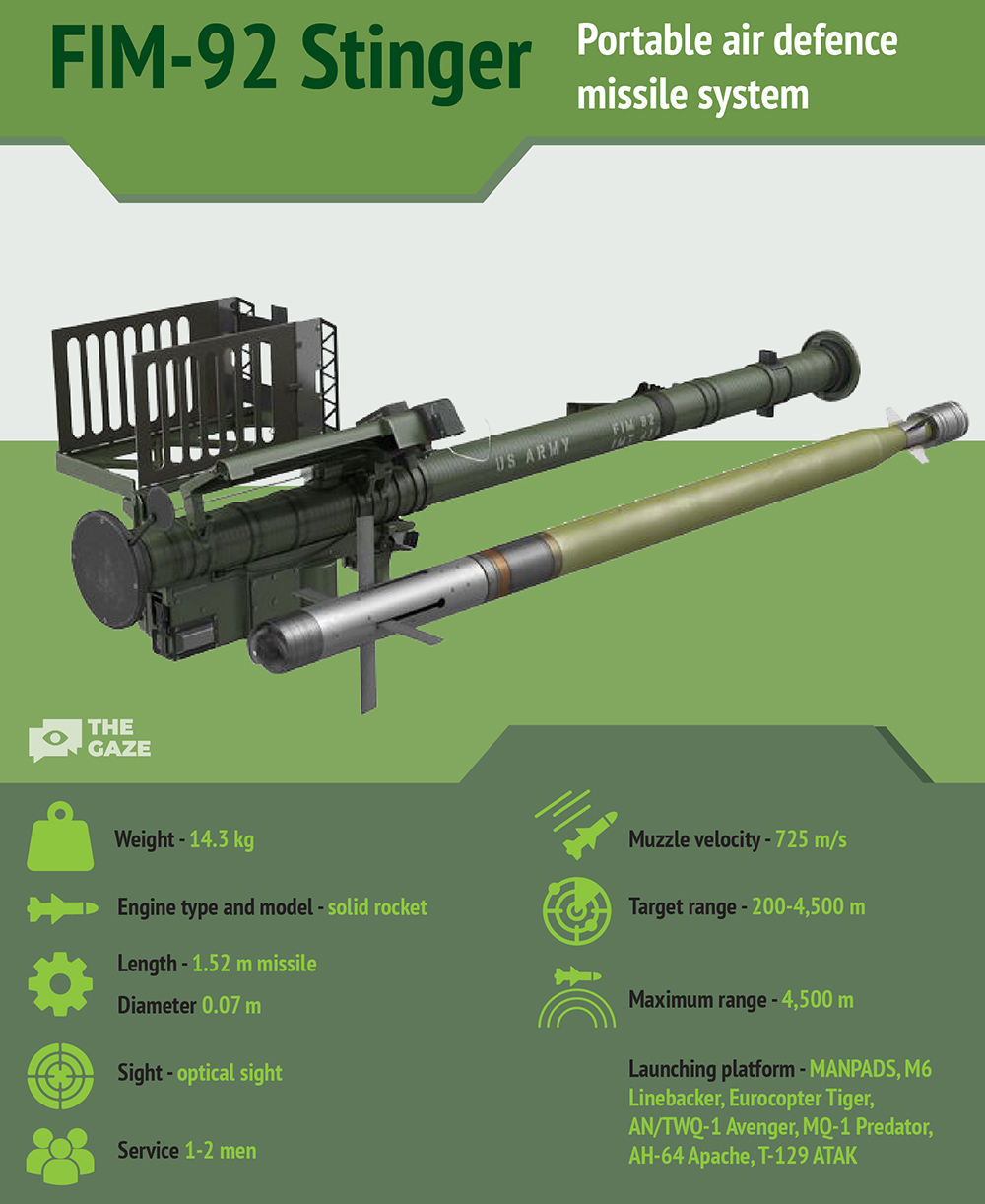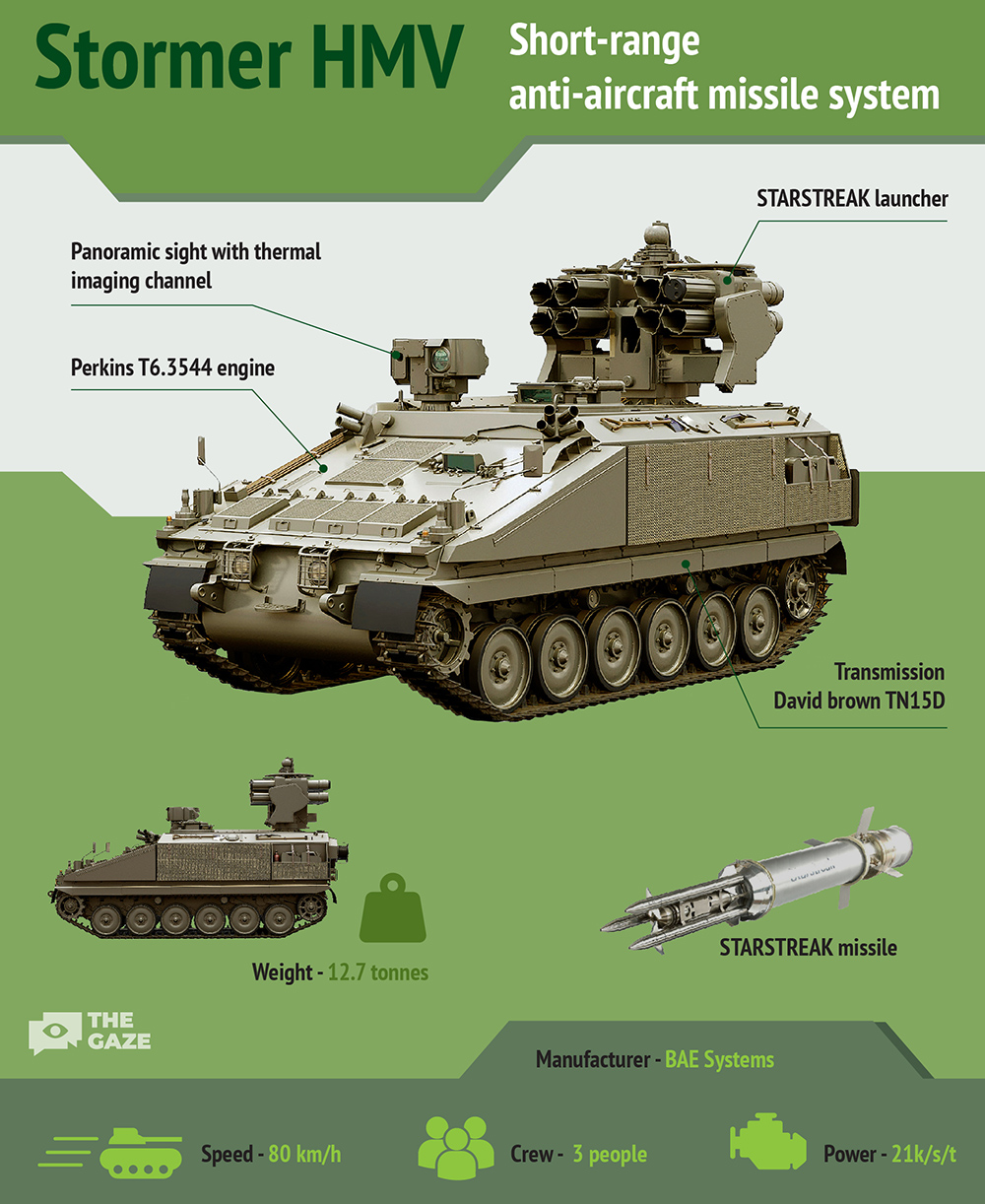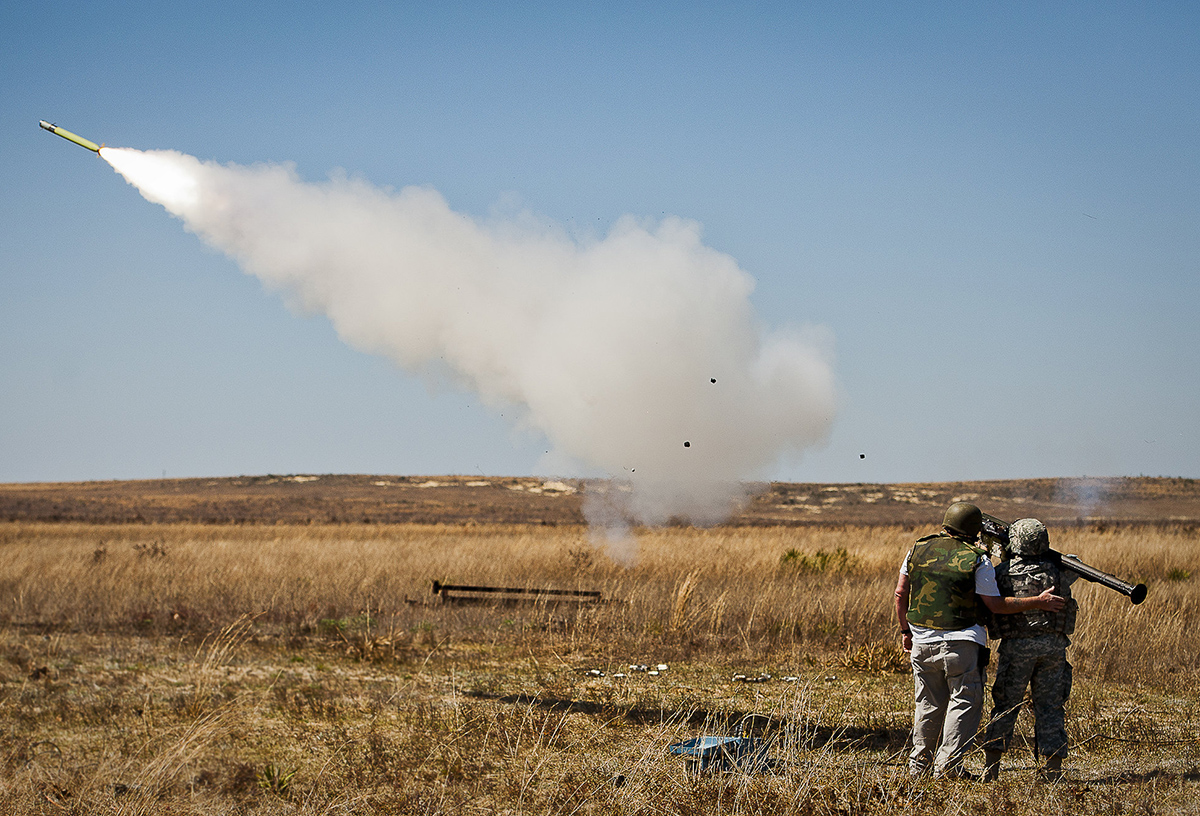The importance of mobile systems countering aerial threats in modern warfare is difficult to overstate. Portable anti-aircraft complexes and short-range air defense systems have played and continue to play a significant role on the battlefields of the Ukrainian-Russian war. They are instrumental in downing not just Russian tactical aviation, UAVs, and helicopters, but even tactical and cruise missiles. In the lead-up to the invasion, the Ukrainian army primarily operated with outdated short-range air defense systems such as Osa, Strela-10, and the Soviet counterpart to the Stinger missile system, the Igla MANPADS. It’s perhaps unnecessary to emphasize the condition of these systems on the eve of a major war, only to note that most of them were developed in the 1970s and 1980s.
The first foreign sample of this weaponry provided to Ukraine by allies was the FIM-92 Stinger MANPADS. While the Javelin anti-tank missiles were imported into Ukraine almost without delay before the invasion, the transfer of the Stinger or permission for their transfer from third countries initially faced difficulties. In early January 2022, a high-ranking official from the US State Department didn’t have a definitive answer to this question.
This serves as additional evidence supporting the notion that, at that time, the chances of Ukraine resisting a possible Russian onslaught were perceived as extremely low in the White House.
“We asked: Can we have Stingers? They said, ‘No, dig trenches and kill as many Russians as possible until it’s all over.’ People thought our victory was impossible,” recalled former Ukrainian Minister of Defense Oleksiy Reznikov in a later interview. However, eventually, at the end of January, the US allowed the Baltic countries to provide Ukraine with these MANPADS from their own reserves. The first shipment from Lithuania landed in Boryspil on February 13. The exact number of complexes available to the Ukrainian Defense Forces at the time of the invasion remains unknown, but after the US made its decision, Latvia, Estonia, Germany, and the Netherlands joined in providing assistance. Ultimately, the US committed to supplying Ukraine with no fewer than 1,400 such systems.
FIM-92 Stinger
The FIM-92 Stinger is a portable surface-to-air missile system equipped with infrared homing heads, developed by the American company General Dynamics. It is designed to engage low-flying enemy helicopters and aircraft on head-on and tail-chase courses amidst natural and artificial thermal interference.
Initially, three modifications of the MANPADS were developed: Stinger (basic), Stinger-POST (Passive Optical Seeking Technology), and Stinger-RMP (Reprogrammable Microprocessor). They share similar components and the same shooting range and target engagement height, differing only in their homing heads (HH) used on FIM-92 modifications A, B, and C. Subsequently, Raytheon refined the production of FIM-92D, FIM-92E Block I, and FIM-92E Block II modifications. The most modern version of the missile is the FIM-92K.

The Stinger MANPADS of all modifications consist of the following core elements: a guided missile in a transport-launch container, an optical sight for visual detection and target tracking, a power and cooling block with an electric battery and liquid argon capacity, and “friend-or-foe” recognition equipment AN/PPX-1.
FIM-92E Block I missiles are equipped with a dual-band interference-resistant homing head, operating in the infrared and ultraviolet ranges, a fragmentation-high-explosive warhead weighing 3 kg, and have a flight range of up to 8 km. The FIM-92E Block II missile features an all-aspect thermal imaging HH.
The rocket engine accelerates the missile to a speed of 2.2 Mach, maintained throughout its flight to the target. The MANPADS can engage targets flying at altitudes ranging from 180 to 3800 meters, with a range of up to 4500 meters for the system’s effective zone.
A surface-to-air missile crew consists of two military personnel: a gunner and a commander who acts as a target indicator for the gunner, notifying them of the appearance of targets in the airspace sector. However, for the normal operation of the complex, one person is sufficient due to its primary characteristics and the concept emphasizing simplicity in aiming and high striking capability.
Ukrainians have effectively utilized the Stinger from the initial days of the invasion. Social media circulated striking footage of two Russian attack helicopters shot down over the Kyiv Reservoir, heading towards the capture of the military airport in Hostomel. Ukrainians continue to actively use Stinger systems on the front lines, both in the portable complex’s basic version and in the stationary modification, Dual Mount Stinger, as well as on mobile platforms like the Avenger. They target enemy ground attack aircraft, helicopters, tactical UAVs, and missiles.
For example, there are known cases of Tochka-U missiles and X-101 air-launched cruise missiles being shot down by SAMs. Ukrainian units highly appreciate the capabilities and technical characteristics of this type of weapon, noting a number of its advantages over the Soviet analogue, the Igla MANPADS. In particular, they note that the American system has better electronics and guidance.
It’s worth noting that allies have provided Ukraine with a range of effective MANPADS that match the characteristics of the American complex. These include the Polish Piorun, British LMM Martlet and StarStreak, and the Swedish RBS-70.
Stormer HVM
Special mention goes to Western short-range mobile air defense missile systems installed on wheeled or tracked platforms. Among them stands out the Stormer HVM. It’s a self-propelled short-range air defense missile system on the tracked chassis of the FV4333 armored transporter manufactured by BAE Systems.
Its primary purpose is to provide cover against air attack and reconnaissance in the close zone. The complex was added to the Ukrainian Armed Forces’ arsenal in the summer of 2022.

The system features a rotating launch unit for eight Starstreak missiles. An additional 12 missiles are stored in the rear compartment of the chassis. Alongside the launch unit, there’s a panoramic sight with a thermal imaging channel and an air threat warning system for target recognition and prioritization.
The Starstreak missiles used in the system can engage targets at a maximum altitude of 5-7 km and a range of 7 km. Accelerating to a speed of 3.5 Mach, they strike the target with a warhead containing three tungsten sub-elements, called “darts.”
The system utilizes a laser beam riding guidance method. The complex’s automation illuminates the target, and the missile remains in the beam, striking it.
One of Stormer’s key features is the absence of a radar station, meaning it emits no signals and cannot be detected by onboard threat warning systems installed on aircraft.
Ukrainian military officials highlight the high efficiency of the system, reporting numerous successful air target interceptions on various fronts.
Summing up the review of air defense systems provided by Ukraine’s partners, it’s noted that these deliveries significantly increased the density and effectiveness of Ukrainian air defense. However, Ukraine still direly needs this type of weaponry due to combat losses and the scale of challenges posed by the potential of the Russian military machine, particularly in the use of long-range combat drones.
***
In the next feature, we’ll discuss the anti-drone systems in the possession of the Ukrainian Defense Forces. Previously, we covered anti-tank missile systems that aided the Ukrainian Armed Forces in halting Russian forces on the outskirts of Kyiv in the spring of 2022. We explored the “armored fist” of the Ukrainian army – tanks and other armored vehicles provided by Western partners – and heavy air defense systems protecting Ukrainian cities.
Source: The Gaze







